Midea Kitchen Appliances XM831CYY Microwave Oven User Manual XC151KXX P00A
Guangdong Midea Kitchen Appliances Manufacturing Co.,Ltd Microwave Oven XC151KXX P00A
VG8XM831CYY_User manual

SAVE THESE INSTRUCTIONS CAREFULLY
Read these instructions carefully before using your
microwave oven, and keep it carefully.
If you follow the instructions, your oven will provide you with
many years of good service.
MODEL:EM831C5
EM831C5G
EM831C5 K
H
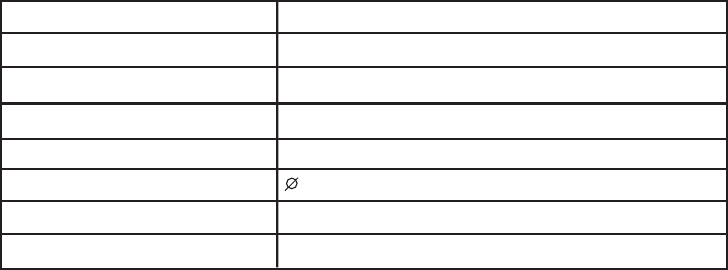
Specifications
PRECAUTIONS TO AVOID POSSIBLE EXPOSURE
TO EXCESSIVE MICROWAVE ENERGY
(a) Do not attempt to operate this oven with the door open since this can result in
harmful exposure to microwave energy. It is important not to break or tamper
with the safety interlocks.
(b) Do not place any object between the oven front face and the door or allow soil or
cleaner residue to accumulate on sealing surfaces.
(c) Do not operate the oven if it is damaged. It is particularly important that
the oven door closes properly and that there is no damage to the:
(1) DOOR (bent)
(2) HINGES AND LATCHES (broken or loosened)
(3) DOOR SEALS AND SEALING SURFACE
(d) The oven should not be adjusted or repaired by anyone except properly
qualified service personnel.
If the apparatus is not maintained in a good state of cleanliness, its surface could
be degraded and affect the lifespan of the apparatus and lead to a dangerous
situation.
ADDENDUM
2
120V~ 60Hz
1 0W
00W
1. Cu.ft.
EM
Model:
Rated Voltage:
Rated Input Power(Microwave):
Rated Output Power(Microwave):
Oven Capacity:
Turntable Diameter:
External Dimensions:
Net Weight:
1 inch
2 X X12. inch ( X X3 mm)
Approx. Lbs(1 kg)
831C5H/5G/5K
20
8
0
0.6
609 337 04.5
4.3
4.0 13.6 0
31.5
IMPORTANT SAFETY INSTRUCTIONS
WARNING
1. Read all instructions before using the
appliance.
2. Read and follow the specific: " PRECAU-
TIONS TO AVOID POSSIBLE EXPOSURE
TO EXCESSIVE MICROWAVE ENERGY"
found on page 2.
3. As with most cooking appliances, close
supervision is necessary to reduce the risk
of a fire in the oven cavity.
4.To reduce the risk of fire in the oven
cavity:
i). Do not overcook food. Carefully attend
the appliance when paper, plastic, or
other combustible materials are placed
inside the oven to facilitate cooking.
ii).Remove wire twist-ties and metal
handles from paper or plastic
containers/bags before placing them in
the oven.
iii). If materials inside the oven ignite,
keep the oven door closed. Turn the
oven off, and unplug the appliance.
Disconnect the power cord, shut off
power at the fuse or circuit breaker panel.
iv). Do not use the oven cavity for storage
purposes. Do not leave paper products,
cooking utensils, or food in the cavity
when not in use.
5. This oven must be grounded. Connect
only to properly grounded outlet. See
" GROUNDING INSTRUCTIONS" found
on page 4.
6. Install or locate this oven only in
accordance with the installation
instructions provided.
7. Some products such as whole eggs
and sealed containers-for example,
closed glass jars-are able to explode
and should not be heated in the oven.
To reduce the risk of burns, electric shock, fire,injury to
persons or exposure to excessive microwave oven energy
when using your appliance, follow basic safety precautions,
including the following:
8. Use this appliance only for its intended
uses as described in this manual. Do
not use corrosive chemicals or vapors
in this appliance. This oven is
specifically designed to heat or cook
or dry food. It is not designed for
industrial or laboratory use.
9. As with any appliance, close
supervision is necessary when used
by children.
10. Do not operate this oven if it has a
damaged cord or plug, if it is not
working properly or if it has been
damaged or dropped.
11. This appliance should be serviced only
by qualified service technicians.
Contact the nearest authorized service
facility for examination, repair or
adjustment.
12. Do not cover or block any openings on
the oven.
13. Do not store or use this appliance
outdoors.
14. Do not use this oven near water, for
example, near a kitchen sink, in a wet
basement, near a swimming pool, or
similar locations.
15. Do not immerse cord or plug in water.
16. Keep cord away from heated surfaces.
17. Do not let cord hang over edge of
table or counter.
18. When cleaning surfaces of door and
oven that comes together on closing
the door, use only mild, nonabrasive
soaps or detergents applied with a
sponge or soft cloth.
3

i) Do not overheat the liquid.
ii) Stir the liquid both before and halfway through heating it.
iii) Do not use straight-sided containers with narrow necks.
iv) After heating, allow the container to stand in the microwave oven for a short time
before removing the container.
v) Use extreme care when inserting a spoon or other utensil into the container.
19. Liquids, such as water, coffee, or tea are able to be overheated beyond the boiling point
without appearing to be boiling. Visible bubbling or boiling when the container is
removed from the microwave oven is not always present. THIS COULD RESULT IN
VERY HOT LIQUIDS SUDDENLY BOILING OVER WHEN THE CONTAINER IS
DISTURBED OR A SPOON OR OTHER UTENSIL IS INSERTED INTO THE LIQUID.
This appliance must be grounded. In the event of
an electrical short circuit, grounding reduces the risk
of electric shock by providing an escape wire for the
electric current. This appliance is equipped with a
cord having grounding wire with a grounding plug.
The plug must be plugged into an outlet that is
properly installed and grounded.
Consult a qualified electrician or serviceman if the
grounding instructions are not completely understood
or if doubt exists as to whether the appliance is
properly grounded. If it is necessary to use an
extension cord, use only a 3-wire extension cord that
has a 3-pronged grounding plug, and a 3-slot
receptacle that will accept the plug on the appliance.
GROUNDING INSTRUCTIONS
SAVE THESE INSTRUCTIONS
WARNING
DANGER
Electric Shock Hazard
Touching some of the internal
components can cause serious
personal injury or death. Do not
disassemble this appliance.
Electric Shock Hazard
Improper use of the grounding
can result in electric shock. Do
not plug into an outlet until
appliance is properly installed
and grounded.
(grounding) plug
Three-pronged
The marked rating of the extension cord shall be
equal to or greater than the electrical rating of the
appliance.
4
CAUTION
Personal Injury Hazard
Tightly-closed utensils
could explode. Closed
containers should be opened
and plastic pouches should be
pierced before cooking.
Utensil Test:
1. Fill a microwave-safe container with 1 cup of cold
water (250ml) along with the utensil in question.
2. Cook on maximum power for 1 minute.
3. Carefully feel the utensil. If the empty utensil is
warm, do not use it for microwave cooking.
4. Do not exceed 1 minute cooking time.
UTENSILS See the instructions on "Materials you can use in
microwave oven or to be avoided in microwave oven."
There may be certain non-metallic utensils that are not
safe to use for microwaving. If in doubt, you can test the
utensil in question following the procedure below.
Radio Interference
1. A short power-supply cord is provided to reduce the risks resulting from becoming entangled in
or tripping over a longer cord.
2. Longer cord sets or extension cords are available and may be used if cared is exercised in
their use.
3. If a long cord sets or extension cord is used:
1) The marked electrical rating of the cord set or extension marked electrical rating of the cord
set or extension cord should be at least as great as the electrical rating of the appliance.
2) The extension cord must be a grounding-type 3-wire cord; and
3) The longer cord should be arranged so that it will not drape over the countertop or tabletop
where it can be pulled on by children or tripped over unintentionally.
1. Operation of the microwave oven may cause interference to your radio, TV
or similar equipment.
2. When there is interference, it may be reduced or eliminated by taking the
following measures:
1) Clean door and sealing surface of the oven
2) Reorient the receiving antenna of radio or television.
3) Relocate the microwave oven with respect to the receiver.
4) Move the microwave oven away from the receiver.
5) Plug the microwave oven into a different outlet so that microwave oven
and receiver are on different branch circuits.
5
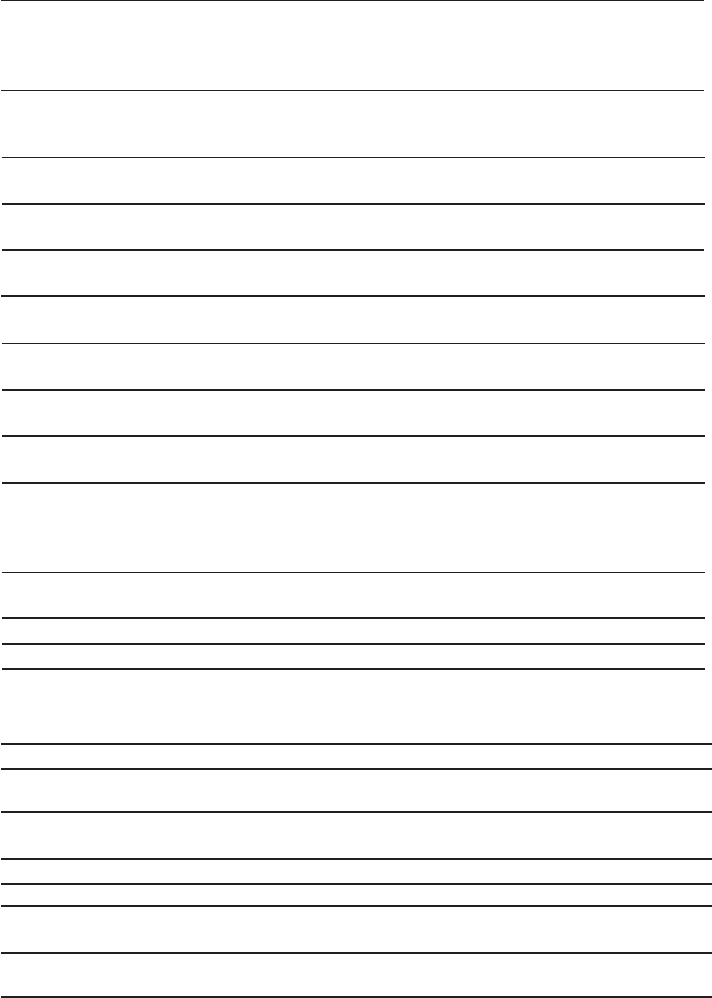
Materials you can use in microwave oven
Utensils Remarks
Aluminum foil Shielding only. Small smooth pieces can be used to cover thin parts of
meat or poultry to prevent overcooking. Arcing can occur if foil is too
close to oven walls. The foil should be at least 1 inch (2.5cm) away from
oven walls.
Follow manufacturer’s instructions. The bottom of browning dish must be
at least 3/16 inch (5mm) above the turntable. Incorrect usage may cause
the turntable to break.
Microwave-safe only. Follow manufacturer's instructions. Do not use
cracked or chipped dishes.
Always remove lid. Use only to heat food until just warm. Most glass jars
are not heat resistant and may break.
Heat-resistant oven glassware only. Make sure there is no metallic trim.
Do not use cracked or chipped dishes.
Follow manufacturer’s instructions. Do not close with metal tie. Make
slits to allow steam to escape.
Use for short–term cooking/warming only. Do not leave oven unattended
while cooking.
Use to cover food for reheating and absorbing fat. Use with supervision
for a short-term cooking only.
Use as a cover to prevent splattering or a wrap for steaming.
Microwave-safe only. Follow the manufacturer’s instructions. Should be
labeled "Microwave Safe". Some plastic containers soften, as the food
inside gets hot. "Boiling bags" and tightly closed plastic bags should be
slit, pierced or vented as directed by package.
Microwave-safe only. Use to cover food during cooking to retain
moisture. Do not allow plastic wrap to touch food.
Thermometers Microwave-safe only (meat and candy thermometers).
Wax paper Use as a cover to prevent splattering and retain moisture.
Browning dish
Glass jars
Glassware
Oven cooking
bags
Paper plates
and cups
Paper towels
Parchment
paper
Plastic
Plastic wrap
Dinnerware
Materials to be avoided in microwave oven
Utensils Remarks
Aluminum tray
Food carton with
metal handle
Metal or metal-
trimmed utensils
Metal twist ties
Paper bags
Plastic foam
Wood
Metal shields the food from microwave energy. Metal trim may
cause arcing.
May cause a fire in the oven.
Plastic foam may melt or contaminate the liquid inside when exposed
to high temperature.
Wood will dry out when used in the microwave oven and may split
or crack.
May cause arcing. Transfer food into microwave-safe dish.
May cause arcing. Transfer food into microwave-safe dish.
May cause arcing and could cause a fire in the oven.
6
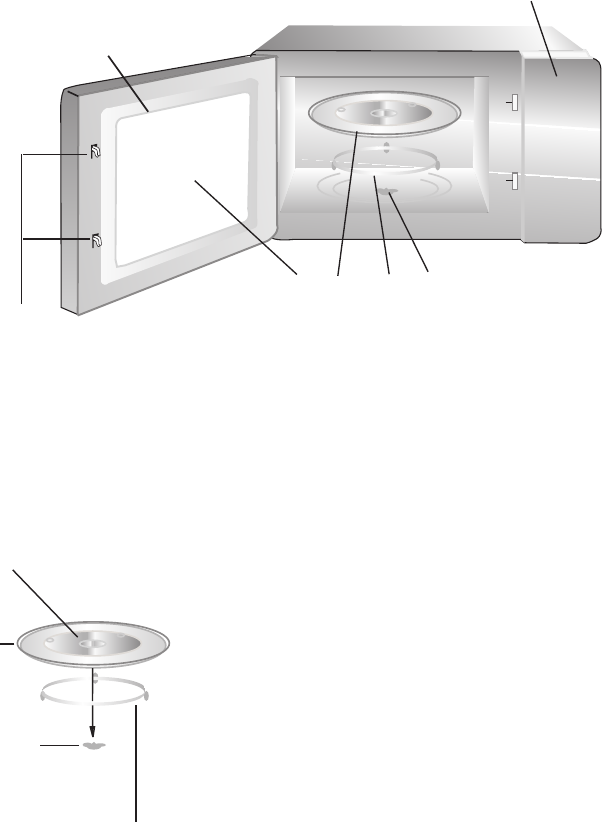
7
A) Control panel
B) Turntable shaft
C) Turntable ring assembly
D) Glass tray
E) Observation window
F) Door assembly
G) Safety interlock system
F
G
A
CB
ED
SETTING UP YOUR OVEN
Names of Oven Parts and Accessories
Remove the oven and all materials from the carton and oven cavity.
Your oven comes with the following accessories:
Glass tray 1
Turntable ring assembly 1
Instruction Manual 1
Hub (underside)
Glass tray
Turntable ring assembly
a. Never place the
glass tray
upside down. The glass
tray should never be restricted.
b. Both
glass tray
and
turntable ring assembly
must
always be used during cooking.
c. All food and containers of food are always placed
on the
glass tray
for cooking.
d. If
glass tray
or
turntable ring assembly
cracks or
breaks, contact your nearest authorized service
center.
Turntable Installation
Turntable shaft
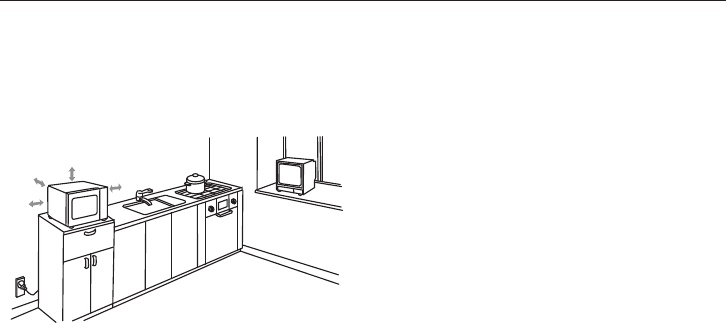
8
Installation
A minimum clearance of 3.0 inches
(7.5cm) is required between the oven and
any adjacent walls. One side must be open.
(1) Leave a minimum clearance of 12
inches (30cm) above the oven.
(2) Do not remove the legs from the
bottom of the oven.
(3) Blocking the intake and/or outlet openings
can damage the oven.
(4) Place the oven as far away from
radios and TV as possible.
Operation of microwave oven may
cause interference to your radio or TV
reception.
2. Plug your oven into a standard household
outlet. Be sure the voltage and the
frequency is the same as the voltage
and the frequency on the rating label.
WARNING: Do not install oven over a
range cooktop or other heat-producing
appliance. If installed near or over a heat
source, the oven could be damaged and
the warranty would be void.
3.0 inch(7.5cm)
3.0 inch(7.5cm)
12 inch(30cm)
OPEN
Remove all packing material and accessories.
Examine the oven for any damage such as
dents or broken door. Do not install if oven is
damaged.
Countertop Installation
Cabinet: Remove any protective film found
on the microwave oven cabinet surface.
Do not remove the light brown Mica cover
that is attached to the oven cavity to
protect the magnetron.
1. Select a level surface that provide
enough open space for the intake
and/or outlet vents.
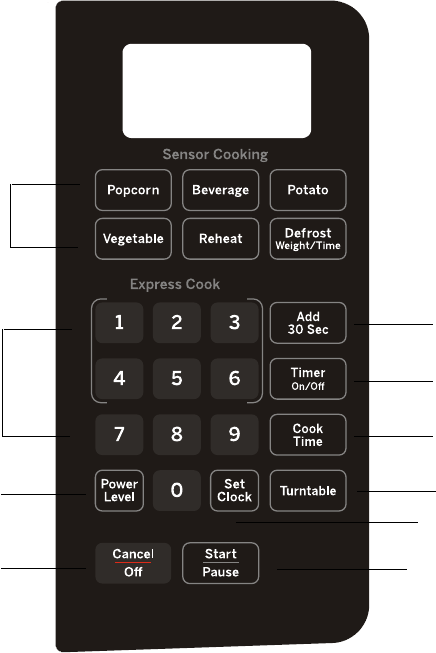
9
(1) Cook
(3) Power
( ) C
( ) A
( ) Number buttons from 0 to 9.
(8)
( )
( )
Control Panel and Features
OPERATION
(5)
(3)
(9)
(2)
( )1
(4)
(6)
(7)
(8)
( )10
Sensor ing:Popcorn,Beverage,Potato,Vegetable,Reheat,
Defrost Weight/Time
2
Level
ancel/Off4
5 dd 30 Sec
6 Timer n/ ffO O
7
Turntable
(9) Set Clock
( )
Cook Time
10 Start/Pause
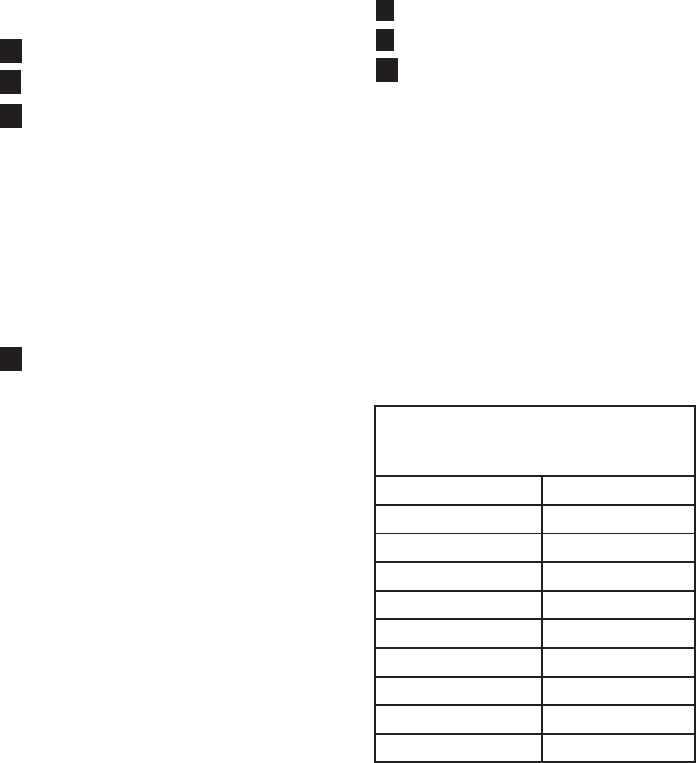
10
Cook Time
Allows you to microwave for any time up to 99
minutes and 99 seconds.
Power level 10 (HIGH) is automatically set, but
you may change it for more flexibility.
1 Press Cook Time.
2 Enter cooking time.
3 Press START.
Cooking will start when the countdown
begins in the display.
You may open the door during Cook Time to
check the food. Close the door and press START
to resume cooking.
Express Cook
This is a quick way to set cooking time for 1-6
minutes.
1 Press one of the Express Cook pads (from
1-6) for 1-6 minutes of cooking at power
level 10.
For example, press the 2 pad for 2 minutes
of cooking time.
The power level can be changed as time is
counting down. Press POWER LEVEL and enter
1-10.
NOTE: Express Cook function pertains to pads
1-6 only.
Add 30 Sec
This will add 30 seconds to the time counting
down each time the pad is pressed. Each touch
will add 30 seconds, up to 99 minutes and 99
seconds.
Add 30 sec can also be used like an express 30
seconds button. The microwave oven will start
immediately when pressed.
OPERATION
Weight Defrost
Use Weight Defrost for meat, poultry and fish.
Use Time Defrost for most other frozen foods.
(Time Defrost is explained on page 13.)
1 Press DEFROST once for Weight Defrost.
2 Enter the weight in pounds.
3 Press START.
Cooking will start when the countdown
begins in the display.
Defrosting Tips
Remove meat from package and place on
microwave-safe dish.
When the oven signals, turn the food over.
Remove defrosted meat or shield warm
areas with small pieces of foil.
After defrosting, most meats need to stand
5 minutes to complete defrosting. Large
roasts should stand for about 30 minutes.
Conversion Guide
If the weight of food is stated in pounds
and ounces, the ounces must be convert-
ed to tenths (.1) of a pound.
Ounces Pounds
1-2 .1
3 .2
4-5 .3
6-7 .4
8 .5
9-10 .6
11 .7
12-13 .8
14-15 .9
Note: Max 6.0 lbs.

11
Time Defrost
Allows you to defrost for a selected length of
time.
1 Press DEFROST twice for Time Defrost.
2 Enter defrosting time in minutes and seconds.
3 Press START.
Cooking will start when the countdown
begins in the display.
At one half of selected defrosting time, turn food
over and break apart or rearrange pieces for
more even defrosting. Shield any warm areas
with small pieces of foil. The oven will continue to
defrost if you don’t open the door and turn the
food.
Noises may be heard during defrosting. This
is normal when oven is not operating at High
power.
Defrosting Tips
Foods frozen in paper or plastic can be
defrosted in the package. Closed packages
should be slit, pierced or vented AFTER food has
partially defrosted. Plastic storage containers
should be partially uncovered.
Family-size, prepackaged frozen dinners can
be defrosted and microwaved. If the food is in
a foil container, transfer it to a microwave-safe
dish.
Foods that spoil easily should not be allowed
to sit out for more than one hour after
defrosting. Room temperature promotes the
growth of harmful bacteria.
For more even defrosting of larger foods,
such as roasts, use Time Defrost. Be sure
large meats are completely defrosted before
cooking.
When defrosted, food should be cool
but softened in all areas. If still slightly icy,
return to the microwave very briefly, or let it
stand a few minutes.
Turntable
For best cooking results, leave the turntable on.
It can be turned off for large dishes.
Press the Turntable pad once to turn the
turntable off. Press again to turn the turntable
back on.
Sometimes the turntable can become too hot to
touch. Be careful touching the turntable during
and after cooking.
Turntable can be turned off during the Cook
Time or Express Cook features by pressing
the Turntable pad. Note: At the conclusion of
the Cook Time and Express Cook features, the
turntable will automatically return to ON.
V
ent Fan
The vent fan removes steam and other vapors
from surface cooking.
Press Vent Fan once for high fan speed, twice for
low fan speed or three times to turn the fan off.
Automatic Fan
An automatic fan feature protects the microwave
from too much heat rising from the cooktop
below it. It automatically turns on if it senses too
much heat.
If you have turned the fan on you may find that
you cannot turn it off. The fan will automatically
turn off when the internal parts are cool. It may
stay on for 30 minutes or more after the cooktop
and microwave controls are turned off.

12
Popcorn
To use the Popcorn feature:
1
Press the
POPCORN button once for 2.0 ounce
bag, twice for 2.5 ounce bag, or three times for a
3.0 ounce bag.
2
Press START.
Cooking will start when the countdown
begins in the display.
You can not change the selection or quantity
after the feature has started.
If food is undercooked after the countdown, use Cook
Time for additional cooking time. We recommend 30
seconds and watch carefully.
Use only with prepackaged microwave
popcorn weighing 2.0 to 3.0 ounces.
NOTE: Do not use this feature twice in
succession on the same food portion—it may
result in severely overcooked or burnt food.
Reheat
The Reheat feature reheats servings of previously
cooked foods or a plate of leftovers.
Place the cup of liquid or covered food in the oven.
1
Press the
REHEAT button up to six times to
choose the correct selection.
Press once for a pizza.
Press twice for vegetables.
Press three times for a plate of leftovers.
Press four times for soup.
Press five times for meat.
Press six times for pasta.
Press the reheat pad again after food type
has been entered in order to select quantity.
Press START.
Cooking will start when the countdown
begins in the display.
After removing food from the oven, stir, if possible,
to even out the temperature. Reheated foods may have
wide variations in temperature. Some areas of food
may be extremely hot.
If food is not hot enough after the countdown use
Cook Time for additional reheating time.
Some Foods Not Recommended for Use
With Reheat
It is best to use Cook Time for these foods:
Bread products.
Foods that must be reheated uncovered.
Foods that need to be stirred or rotated.
Foods calling for a dry look or crisp surface after
reheating.
NOTE: Do not use this feature twice in
succession on the same food portion—it may
result in severely overcooked or burnt food.
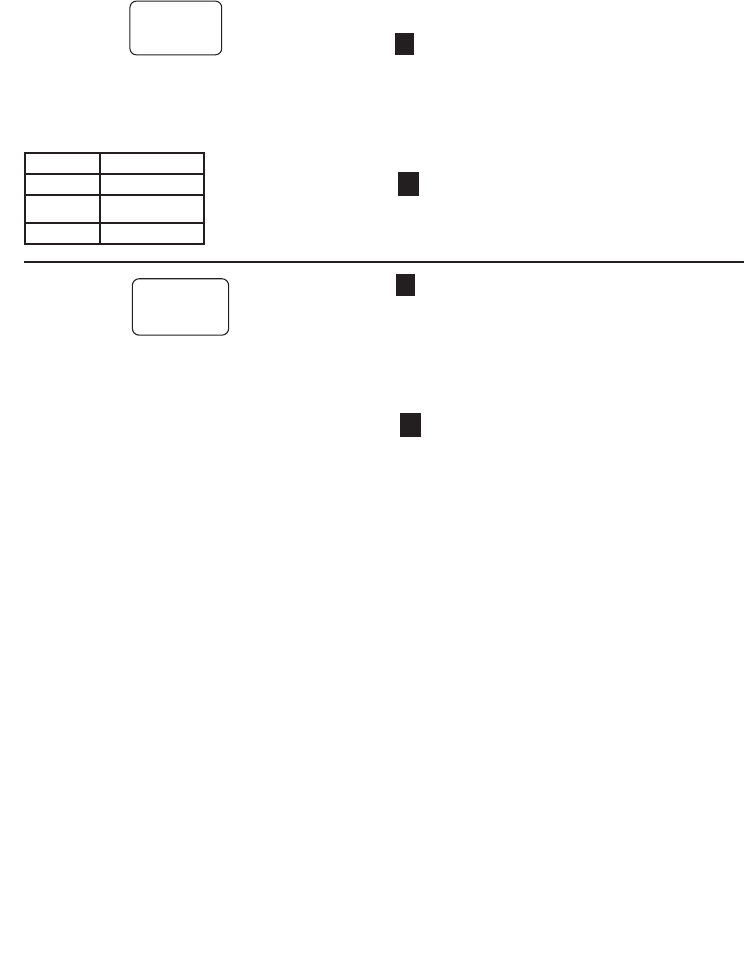
13
Term Definition
Arcing Arcing is the microwave term for sparks in the oven. Arcing is caused by:
• metal or foil touching the side of the oven.
• foil that is not molded to food (upturned edges act like antennas).
• metal such as twist-ties, poultry pins, gold-rimmed dishes.
• recycled paper towels containing small metal pieces.
Covering Covers hold in moisture, allow for more even heating and reduce cooking time.
Venting plastic wrap or covering with wax paper allows excess steam to escape.
Shielding In a regular oven, you shield chicken breasts or baked foods to prevent over-
browning. When microwaving, you use small strips of foil to shield thin parts, such
as the tips of wings and legs on poultry, which would cook before larger parts.
Standing Time When you cook with regular ovens, foods such as roasts or cakes are allowed to
stand to finish cooking or to set. Standing time is especially important in micro-
wave cooking. Note that a microwaved cake is not placed on a cooling rack.
Venting After covering a dish with plastic wrap, vent the plastic wrap by turning back one
corner so excess steam can escape.
Microwave terms.
Beverage
Use the Beverage feature to heat various
amounts of liquids measured in ounces: Place
the liquid into the microwave oven.
4 oz. 1/2 cup
8 oz. 1 cup
12 oz. 1-1/2 cups
16 oz. 2 cupls
1
Press the
Beverage button up to four times to
choose the correct selection.
Press once for a 4 ounce beverage.
Press twice for a 8 ounce beverage.
Press three times for a 12 ounce beverage.
Press four times for a 16 ounce beverage.
2 Press START.
Cooking will start when the countdown
begins in the display.
Popcorn
Express Cook
Potato
Start
Pause
Cancel
Off
Beverage
Reheat
Clock
Turntable
Surface
Light
Vent
Fan
Add
30 Sec.
Power
Level
0
8
5
2
7
4
1
9
6
3
Time
Cook
Defrost
Weight/Time
Timer
On/Off
Potato
To use the Potato feature:
Place the potato(es) into the oven.
1
Press the
Potato button up to four times to
choose the correct selection.
Press once for 1 item.
Press twice for 2 items.
Press three times for 3 items.
Press four times for 4 items.
2 Press START.
Cooking will start when the countdown
begins in the display.
NOTE: Do not use this feature twice in
succession on the same food portion. It may
result in severely overcooked or burnt food.
Popcorn
Convenience Cooking
Express Cook
Potato
Start
Pause
Cancel
Off
Beverage
Reheat
Clock
Turntable
Surface
Light
Vent
Fan
Add
30 Sec.
Power
Level
0
8
5
2
7
4
1
9
6
3
Time
Cook
Defrost
Weight/Time
Timer
On/Off

14
Changing the Power Level
The power level may be entered or changed
before or during cooking. Power Level is set for
Level 10 (High) unless it is changed.
1 Press Power Level button.
2 Enter new power level by using the number
pads or press the Power Level button
multiple times until you find the level you
want.
3 After you have selected the power level, wait
five seconds. The display will go back to the
Cook Time screen.
4 Enter cooking time and press START.
OR
1 Press Cook Time button.
2 Enter your cooking time.
3 Press Power Level button.
4 Enter new power level by using the number
pads or press the Power Level button
multiple times until you find the level you
want.
5 After you have selected the power level, wait
five seconds. The display will go back to the
Cook Time (Enter Time) screen.
6 Press START.
Variable power levels add flexibility to microwave
cooking. The power levels on the microwave oven
can be compared to the surface units on a range.
Each power level gives you microwave energy
a certain percent of the time. Power level 7 is
microwave energy 70% of the time. Power level
3 is energy 30% of the time. Most cooking will be
done on High (power level 10) which gives you
100% power. Power level 10 will cook faster but
food may need more frequent stirring, rotating
or turning over. A lower setting will cook more
evenly and need less stirring or rotating of the
food. Some foods may have better flavor, texture
or appearance if one of the lower settings is used.
Use a lower power level when cooking foods that
have a tendency to boil over, such as scalloped
potatoes and some casseroles.
Rest periods (when the microwave energy cycles
off) give time for the food to “equalize” or transfer
heat to the inside of the food. An example of this
is shown with Power level 3 —thedefrostcycle.If
microwave energy did not cycle off, the outside
of the food would cook before the inside was
defrosted.
Here are some examples of uses for various
power levels:
High 10 (100%): Fish, bacon, vegetables, boiling
liquids.
Med-High 7 (70%): Gentle cooking of meat and
poultry; baking casseroles and reheating.
Medium 5 (50%): Slow cooking and tenderizing
for stews and less tender cuts of meat.
Low 2 or 3 (20 or 30%): Defrosting; simmering;
delicate sauces.
Warm 1 (10%): Keeping food warm; softening
butter.
NOTE: You can also change the power level
during many cooking modes by pressing the
power level button entering a valid power level.

15
Surface Light
Press SURFACE LIGHT once for bright light, twice
for the night light or a third time to turn the light
off.
Start/Pause
In addition to starting many functions, START/
PAUSE allows you to stop cooking without
opening the door or clearing the display and
resume cooking later.
Clock
To change the time of day.
1 Press the Set Clock button. (The microwave
should not be running.)
2 Enter the appropriate time of day. Clock is on
a 12-hour scale.
3 Press Set Clock or Start to accept the time.
Cancel/Off
Press the CANCEL/OFF button to stop and cancel
cooking at any time.
Control Lock-Out
You may lock the control panel to prevent the
oven from being accidentally started during
cleaning or being used by children.
To lock or unlock the controls, press and hold the
CANCEL/OFF button for three seconds. When the
control panel is locked, LOCKED will be displayed
briefly anytime a button or dial is pressed. “L” will
show in the display.
Timer
NOTE: The Timer indicator will be lit while the
timer is operating.
Timer
The Timer operates as a minute timer and can
be used at any time, even when the oven is
operating.
1 Press the Timer button.
2 Enter a time.
3 Press the Timer 3 Start button to start.
To cancel, press the Timer button. or Clear
button.
NOTE: If you press the Clear button to cancel
the timer and you are cooking at the same
time, it will cancel your cooking selection also.
When time is up, the oven will signal.
To turn off the timer signal, press Timer or Cancel
Display
If you have the Timer counting down and you are
using the Cook Time at the same time, you can
change the display to show either the timer or
the cook time countdown.
If the display shows the time for the Timer and
you would like to view the Cook Time, press the
COOK TIME button.
If the display shows the time for the Cook Time
and you would like to view the Timer, press the
TIMER button

16
Troubleshooting
Check your problem by using the chart below and try the solutions for each problem. If the
microwave oven still does not work properly, contact the nearest authorized service center.
TROUBLE
Oven will not start
POSSIBLE CAUSE POSSIBLE REMEDY
a. Electrical cord for oven is
not plugged in.
b. Door is open.
c. Wrong operation is set.
a. Plug into the outlet.
b. Close the door and try
again.
c. Check instructions.
Arcing or sparking
a. Materials to be avoided in
microwave oven were
used.
b. The oven is operated when
empty.
c. Spilled food remains in the
cavity.
a. Use microwave-safe
cookware only.
b. Do not operate with oven
empty.
c. Clean cavity with wet towel.
Unevenly cooked
foods
a. Materials to be avoided in
microwave oven were
used.
b. Food is not defrosted
completely.
c. Cooking time, power level
is not suitble.
d. Food is not turned or stirred.
a. Use microwave-safe
cookware only.
b. Completely defrost food.
c. Use correct cooking time,
power level.
d. Turn or stir food.
Overcooked foods Cooking time, power level is
not suitable. Use correct cooking time,
power level.
Undercooked foods
a. Materials to be avoided in
microwave oven were used.
b. Food is not defrosted
completely.
c. Oven ventilation ports are
restricted.
d. Cooking time, power level is
not suitable.
a. Use microwave-safe
cookware only.
b. Completely defrost food.
c. Check to see that oven venti-
lation ports are not restricted.
d. Use correct cooking time,
power level.
Improper defrosting
a. Materials to be avoided in
microwave oven were used.
b. Cooking time, power level is
not suitable.
c. Food is not turned or stirred.
a. Use microwave-safe
cookware only.
b. Use correct cooking time,
power level.
c. Turn or stir food.
Maintenance